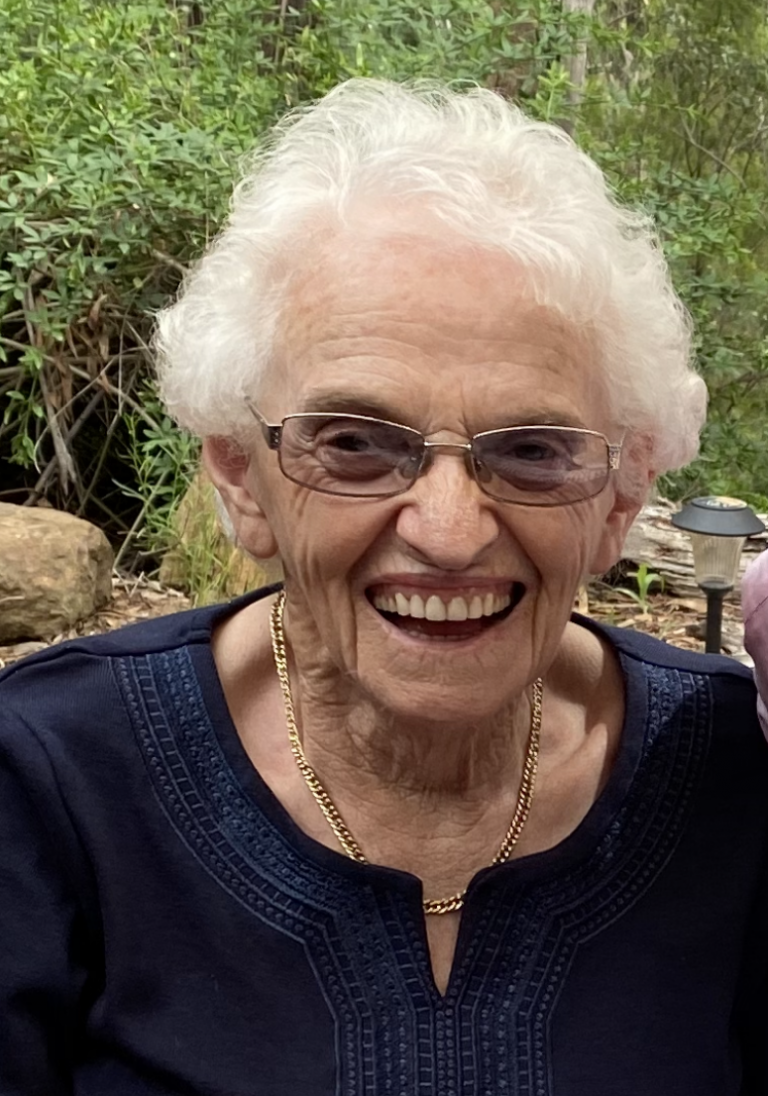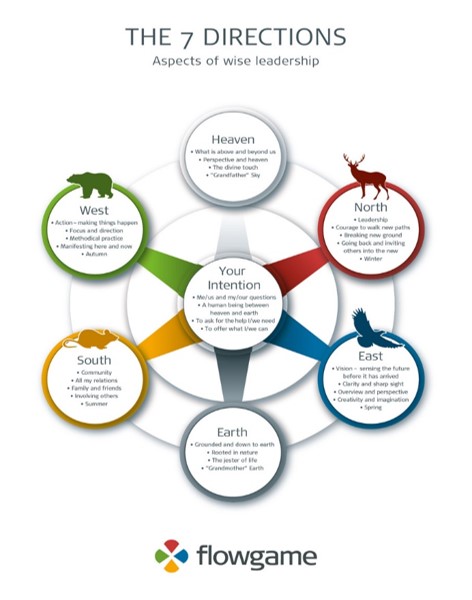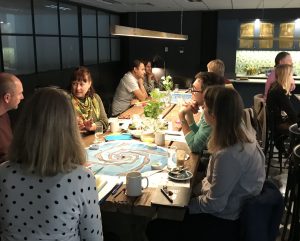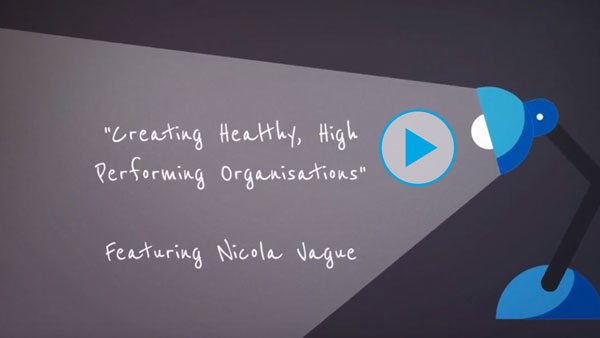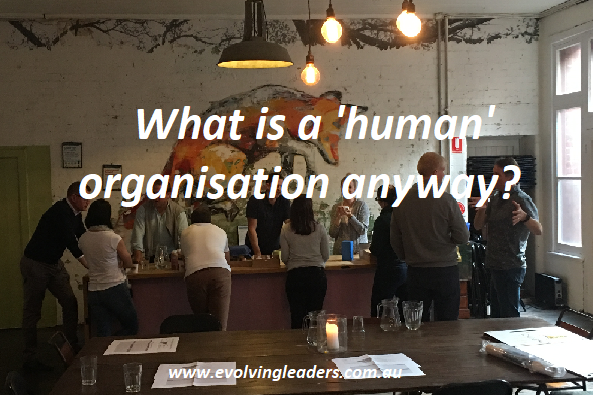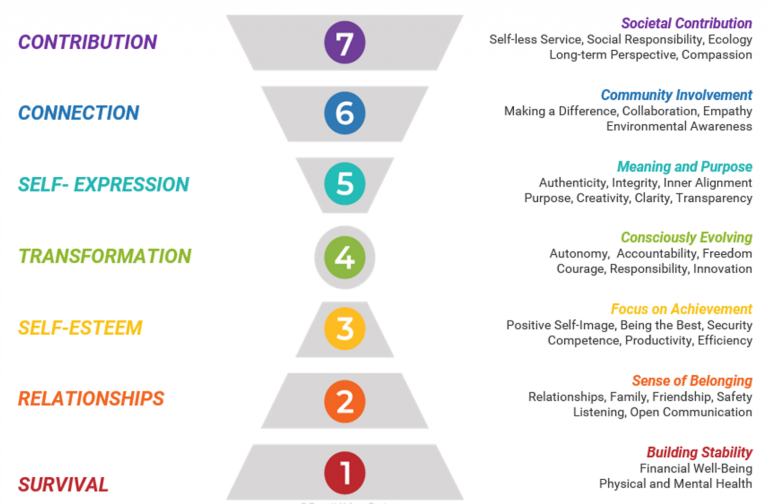This post shares a personal story and suggests that every human being on the planet right now, in some shape or form, is facing into their own ‘growth edge’. It invites the reader to reflect on what they are noticing in themselves and others in terms of this personal learning and highlights that perhaps the luckiest people right now have leaders and organisations that are providing development and wellbeing support for their people.
Meet Elaine. She is my delightful 84-year-old mother-in law. Elaine left school at age 15 to help with home duties on the family farm and continued in that role all through motherhood and grandmother-hood.
In her lifetime, she has baked tonnes of lemon slice and the arguably the best chocolate cake ever. When she isn’t baking, she pours all her energy and focus into supporting her community and showering us – the family – with her love.
Throughout her lifetime, Elaine has felt no desire for, nor any reason to, use a computer or a smartphone. And so, in March 2020, as the world felt like it was closing in on all of us, we realised that that Elaine would soon be in total isolation. Without even the stilted connectedness the internet offers the rest of us, she would have very limited contact with her her family and friends, and we were concerned about the flow-on impact this would have on her overall wellbeing.
So, without further thought, we purchased her an iPad. In a curious way, one of the first questions she asked was, ‘Why is the keyboard not in alphabetical order?’ She had never used any sort of keyboard in her life, let alone an email address. How much we take for granted! This was completely uncharted territory for her.
The rest is history.
True to form, with her enthusiastic approach to a new challenge, she was up-and-running in no time. The pure delight we witnessed when Elaine had her whole family (across many geographical locations) in front of her on the first Facetime call is a precious moment that will stay in my heart forever.
If you had said to me six months ago that, in the year 2020, Elaine would be making Facetime calls, ordering her groceries and doing her banking online, I would have broken out in laughter!
But she was soon doing all of that. We are so proud of her.
Elaine’s story got me thinking about what the disruption of this year has meant to all of us in terms of the learning we have been somewhat forced to do or had to do in many ways. What became clear to me is that every human being on the planet right now has had to confront their own fear at some level and learn something new, or make some change that they would not have made without the pandemic.
No one is exempt. It has been, and continues to be, a true ‘growth edge’ experience for us all. (Read more about growth edge here)
Do you agree? Where have you noticed this happening?
What are you being asked to or forced to change at this time?
What is your personal growth edge right now?
Some examples from my own ‘growth edge backyard’ are:
- quickly getting up to speed and proficient at creating connection and engagement online so as to be able to effectively deliver team development via an online platform. Like many, I still really don’t like facilitating groups on Microsoft Teams, but at least I know how to do it.
- taming my voice in our family to allow each person an equal say in shaping the healthy boundaries needed for life in isolation in a household of five people (that is, learning to listen better and not assuming I always have the best answer)
- establishing a healthy and productive work rhythm by creating greater structure around my allocated working hours, which in my case means 90 minute cycles then taking a break (here is a great article on this topic).
Most clients that I am currently working with are struggling with many aspects of work and life – juggling home schooling, too many hours on Zoom and experiencing other financial and social pressures. It’s the norm rather than the exception right now.
What is being demanded of people by this pandemic in terms of growing and changing for many feels heavy and hard. I am also noticing, however, that the luckiest people during this time work in organisations and with leaders that recognise the need for, and are investing in, the wellbeing and development of their people. It is from this support base, that people can begin to make sense of themselves and their own experiences and begin to see some reward and celebration of their efforts on the other side.
The benefits flow on, as when this growth edge can be applied within a broader team context, it is even more powerful. As individuals grow and change and are able to be more vulnerable and courageous with themselves – as 84-year-old Elaine has demonstrated so well, and when they can do this with their teams as well, then team culture can grow in ways that are good for all.
Could you or your team do with support right now? Please get in touch to book your team development – delivered remotely of course.
This post includes our vision for the ‘human’ teams and organisations of the future that we need to be designing and creating right now to respond and flourish in a rapidly changing world. We call these ‘human organisations’. The post includes the characteristics of a human organisation to help you do a ‘mini-audit’ on the health of your own team/organisation.
“A culture in which everyone could overcome their own internal barriers to change and use errors and vulnerabilities as prime opportunities for personal and company growth.”
– Robert Kegan in Everyone Culture: Becoming a deliberately developmental organisation
Almost anyone who has worked in an organisation has experienced at least some of the aspects of disconnection that have become commonplace in workplaces everywhere. Too often businesses seem to lose sight of the fact that they are, at their core, the sum of the humans of which they are composed. There is ample evidence that this needs to change if businesses are serious about flourishing in the complexity of today’s world.
What is a human organisation?
Human organisations are ‘well’ organisations that are on a deliberate and focussed developmental and cultural evolutionary pathway towards full spectrum consciousness.
There are two central threads that are the woven foundations of a human organisation:
Connection – Connection to self, connection to each other, connection to purpose and vision and connection to the people they serve; and
Accountability – Accepting and embracing accountability to self, each other, the reality (role, team, goal, project, organisation) and holding self and others to account.
Human organisations exude a healthy vibrant culture in which people are inspired to bring out the best possible versions of themselves. In human organisations, people perform at their best without being coaxed or bribed to do so. Instead of reverting to immature behaviours of blame and justification when they come to work, they see themselves as well-rounded adults whose task is to make a meaningful contribution and to help others do likewise.
The result is far more significant contributions from many more people, and a lot less wasted time and emotional energy. The result is greater success in traditional business measures (e.g. profitability and customer satisfaction) as well as improved wellbeing, increased engagement and sustainable human potential.
What are the characteristics of a human organisation?
Some of the characteristics you’re likely to see in a human organisation include:
- Customers feel listened to and their needs are meet at a level beyond their expectations because employees deeply care and feel cared for and supported by the organisation.
- Leadership is less about position than it is about mindset and behaviour. Everyone in the organisation is capable of being recognised as a leader through the way they behave and the choices they make, through supporting others and taking personal responsibility rather than resorting to blame, justification and denial. No one is seen as a leader unless they demonstrate leadership in this way, regardless of their position or title.
- Purpose driven: there is a clear and central ‘why’ that is harvested and activated by the people for the people. It is a grounded source of energy and focus that clarifies, inspires and informs decisions, action and behaviour.
- People are motivated through feeling valued. There is an alignment between what matters to them, the work they do and the workplace culture.
- Connection – real, human connection – with courage and compassion are at the heart of everything that is done within the organisation and for those it serves. Get Connected
- People feel empowered to make choices. High levels of confidence, personal awareness, and accountability exist throughout the organisation.
- People are held to account – They know what is expected of them in their roles and how they ‘show up’ and there are efficient and effective practices and leadership capability to manage this effectively.
- People take responsibility for their own development in a culture of learning and growing.
- People feel a sense of belonging. It feels safe for people to fully show up as who they are and make a meaningful contribution with their unique skills, strengths and preferences. The workplace and its practices are diverse and inclusive and team members experience high levels of psychological safety which results in higher levels of team performance.
- People are highly engaged, feeling a greater sense of connection with their own sense of purpose, with their colleagues and as co-contributors to the organisation’s success in terms of profitability, wellbeing and benefit to the community.
- Internal divisions and turf wars are minimised. Shared values and purpose provide the framework for conversations, decision-making and behaviour. Strategy, culture, purpose and wellbeing are aligned.
- People listen to one another.
- Innovation and creativity are well understood, practised and regarded as ways the organisation can ‘separate itself from the crowd’.
- Reflective practices are woven into the fabric of the organisation. This may include specific mindful moments in meetings, the way performance conversations are had, allocated time and expectations for people to build reflective practice into their weekly rhythm.
- Time and space to think and learn are valued. The space is created to allow people to get to know each other and to reflect on the learning from projects and other experiences they encounter in their day to day. This becomes a part of the daily, weekly, monthly and annual rhythm.
You may like to pause and reflect for a moment here:
- What is the current state of health of your team or organisation?
- What are the strengths that you can build on?
- What areas do you need to bring greater focus to?
- What is one step you can take this week to get started?
Where it starts
Ignoring the need to make your organisation more human is to turn a blind eye to what we know requires a new level of response. It is no longer an option to stand still. The teams and organisations that will thrive and attract the best people are the ones that make the courageous and bold step to begin this developmental, leadership and cultural evolution journey.
However, it needs to be recognised that human organisations are not created overnight. They need to be imagined and designed ‘by the people, for the people’, then given the guidance, investment, nourishment and support they need to grow.
The shift towards a human organisation begins with bringing new awareness to the leadership team about the possibilities of becoming such an organisation. We help leaders to make the connection between the cycle of pain, dysfunction, cultural entropy and poor performance that they may be experiencing in their teams and organisations and bring focus to the antidote for this – which is intentionally growing and creating ‘human organisations’.
Initial steps often involve understanding the current stage of cultural maturity and the cultural evolution required for the team /organisation to evolve to a level of cultural maturity that will enable the business aspirations, measurement of the existing organisational culture, beginning the conversation around organisational purpose and vision and igniting the learning journey for leaders and their teams.
A key part of the learning here is about helping leaders to better understand the visible and invisible forces driving, engagement, wellbeing and performance in the organisational eco-system. A great basis for this conversation and to help build understanding of the organisation as a whole interconnected system is Ken Wilbur’s four quadrant model. It helps to bring a ‘whole of system’ focus and is a great basis for surfacing what is currently helping and what is hindering the organisation’s progress, ahead of then designing a roadmap for cultural and leadership evolution.
If all this sounds just too complex and difficult right now, may I offer one powerful snippet of wisdom:
Connection and Accountability are the golden threads that are woven throughout a human organisation.
In every moment – thought, action, word, decision – we have a choice. We can choose to move towards disconnection or we can choose to move toward connection. In that very action we are being accountable to ourselves, each other and our workplaces.
I choose to grow connection.
What do you choose?
In my next post, I will explore the personal leadership that is required to grow a human team/organisation.
This post explores the importance of knowing and harnessing your personal values as a key navigation system in life and leadership.
Deep down inside what is important to you? What do you want your life to stand for? What sort of qualities do you want to cultivate as a person? How do you want to be in your relationship with others? What matters to you?
In every area of life we make decisions and choices based on what is important to us. This includes what we value as individuals as well as what we absorb of the spoken and unspoken expectations of the communities and organisations of which we are a part.
We are often unaware of the mix and interplay of values that motivate us to act, and that inform our decisions. In organisations, lists of values are more often statements of intent than accurate reflections of how things are really done. Even where the intent is genuine, the greater the gap between words and action the greater the perception of a lack of integrity, resulting in cynicism and disengagement.
Through the process of clarifying our core values – our heart’s deepest desires for how each of us wants to behave as a human being – and using those values to motivate, inspire and guide our ongoing actions, we grow as people and develop our capacity and capability as leaders.
Our bodies know when we act out of alignment from our values
Just as it is within a organisation, it’s critical that our actions are in concert with our core values. Aside from this being important for our integrity, often our bodies will react when we act out of alignment with our personal values. Perhaps you can recall a time when you have felt a pain in the chest or tightness in the belly in such a situation?
I recently coached a senior leader from the professional services sector with the specific brief of developing his capacity and capability to have courageous conversations. He was deeply aware that there was a conversation he needed to have with a member of his team – and should have had months ago – and that the longer he left it the more impact his lack of action was having on the broader team.
However, he felt ill equipped and fearful of having this conversation. He also felt that he was out of integrity with himself in not finding the courage to have it, and that this inner conflict was having a physical and behavioural affect on him.
Limiting values impact how we ‘show up’
As part of our coaching this leader completed a Personal Values Assessment and amongst his list of positive personal values, he had selected a limiting value of ‘being liked’. We explored this value and unpacked the impact that it was having on how he was leading his team overall and specifically with respect to this difficult conversation he had been putting off.
This leader had a good level of personal awareness and he was able to identify that his needing to ‘be liked’ probably stemmed from his childhood place in his family and the wider family dynamics. The power here was for him to see this value written on the page and to directly draw the link to see how the need to be liked was holding him back from having a difficult conversation. More broadly, this value was keeping him from becoming a better version of himself.
Through support and planning for this conversation, this leader was able to lean into his own discomfort (it hadn’t gone away – he just decided to acknowledge it and take action anyway). He had the conversation, and while it was difficult it was ultimately a great gift for both the leader and his team member.
This is an example of how when we want to change behaviour we need to look below the surface to our mindsets, beliefs and values and see what is actually driving our behaviours. From there we can create change.
This leader went a step further and embarked upon a personal values assessment for his direct reports along with a facilitated personal values learning and development session that included him sharing his own journey with the need to ‘be liked’. The group session allowed the team to began to look at the personal values they had in common as a way of building connection and focus and moving toward getting clearer on team values.
Values – based leadership keeps us centered and focused
“Values based leadership and values-based decision making allows us to throw away our rule books. When a group of people espouse an agreed set of values and understand which behaviours support those values, then you no longer need to rely on bureaucratic procedures setting out what people should or should not do in specific situations. All the rules reduce to one—live the values. People can work out for themselves what they need to do, and in so doing become responsible and accountable for their behaviours.” – Richard Barrett
The benefits of becoming a values-driven leader are:
- Leaders become conscious about what drives their decision making and can move towards values-based decision making – a key step in authentic leadership as it transcends personal beliefs.
- Leaders better understand who they are and what’s important to them and why they are motivated or inspired by some things and challenged by others.
- Leaders better understand their people and can design for and create a workplace that maximises engagement and fulfilment.
- Values provide a compass for leaders: a reference point to inform direction, guide how they engage and inspire their teams and how and why they make certain decisions.
Source: Adapted from work of Richard Barrett, Barrett Values Centre
Values have significant power to unite and energise people. Shared values can connect, where race, religion, politics and gender can divide. Becoming a values-driven leader means understanding what is important to you personally and collectively and being committed to acting on those values.
Interested in leveraging values to ignite growth in your organisation? At Evolving Leaders, we support you to unlock the power of values using the Barrett Values Centre Cultural Transformation Tools (CTT) to measure leadership and team values and culture through:
1. Executive Coaching: Leadership Values Assessment and Development
2. Team Culture Assessment and Development: measuring and managing your team’s culture using the Cultural Transformation Tools to surface the invisible factors driving performance and engagement to grow a psychologically safe team culture and strengthen team performance.
This article explores the (not-well-understood) fact that twenty percent of the population have a high sensitivity personality trait. It invites a call to action for leaders and diversity and inclusion practitioners to get on-board with this, and to help these people better understand themselves and to work alongside them to make changes to the work environment to serve individual well-being and to harness this untapped potential.
Last year I ran a particularly engaging and heart-opening workshop as part of a company’s diversity strategy. The workshop turned what was normally a very dour, windowless boardroom into a place infused with energy.
At the end of the day, after all the participants had left, I was still on a high from the experience when the managing director (who was very supportive of our work) popped into the room. He asked how the session went and I shared the excitement and outcomes of the day. I then said to him, ‘Can you feel the energy in the room?’
He looked at me with deep respect (knowing that I could in fact feel the energy in the room) and said, ‘No, Nicola. I can’t feel the energy in the room.’
We both paused and smiled. It was a moment of acknowledging diversity, in the true spirit of the workshop that had been just been held.
That day was a reminder for me of a gift that I have come to take for granted given that I live with it every day. The gift relates to my high sensitivity, which gives me access into so much of what remains invisible to many others.
I had long recognised my high sensitivity but didn’t really give it a name until I came across a book titled The Highly Sensitive Person by clinical psychologist and researcher Elaine N. Aron. My discovery of this book was one of those life changing moments. Reading it helped me to own more of who I am and to stand taller in the world, recognising that my need for self-care – including having time and space alone and avoiding caffeine (one coffee keeps me awake for 24 hours) – is as essential to me as eating, sleeping, and breathing.
20 per cent of the population are born with a highly sensitive personality trait
Highly sensitive herself, Elaine Aron has done years of research and has discovered that ‘sensory processing sensitivity’ is a personality trait that 15 to 20 per cent of the population are born with. Twenty per cent! This means that up to one fifth of the population (and therefore the workforce) has this gift.
What are the traits of a highly sensitive person?
Biologically, highly sensitive people (HSPs) are different to the rest of the population. Their minds work differently. HSPs react more to stimulation: they notice levels of stimulation that go unnoticed by others. They are more easily overwhelmed, need more down time and more time alone and are prone to illness when they ignore their HSP trait.
A common misunderstanding is that HSPs are all introverts, where in fact 30 per cent of all HSPs are extraverts. HSPs have access to what is known as the ‘sixth sense’, which gives access to intuition where they just ‘know’ what a particular outcome of a situation will be ahead of time. They will often know intuitively what decision to make without the need to process it logically or rationally.
Aron uses the acronym DOES to summarise the key facets of this trait:
D: depth of processing – a fundamental characteristic is that HSPs observe and reflect before they act.
“Like those machines that grade fruit by size, we (HSPs) sort the fruit into 10 sizes while others sort it into 2 or 3.” (page 7)
O: easily over stimulated – if you are going to pay more attention to everything, you are bound to tire sooner. Moderate arousal for the rest of the population equals high arousal for a HSP. High arousal for the rest of the population equates to overwhelm and can cause shut down for a highly sensitive person.
E: giving emphasis to our emotional reactions and having strong empathy which, amongst other things, helps us to connect with others, to notice and to learn.
S: sensitive to all the subtleties around them which is often what it most apparent to the HSP – the little things they notice that other miss.
Wondering if you are HSP?
You can do a self-test on Aron’s website based on her work. It will indicate whether you may have the high sensitivity trait. If you find that you could be, I would encourage you to reach out and get the support of a coach or therapist if you feel that would help you to integrate your new insights about yourself.
My intention for sharing
I wanted to share this brilliant work in the hope that if you too feel that you are different (in this highly sensitive way) to many of the people around you, that by understanding this trait you can more fully appreciate yourself. Celebrate your gifts and give yourself the self-care that you need to flourish. Read more about this trait and begin to help others to understand and appreciate your sensitivities. If you are a leader, parent, spouse, or friend of someone who is highly sensitive, the resources can be tools for you too, helping you to start a different conversation and to invite a new level of appreciation and respect.
The implications for diversity and inclusion, leadership and organisations
Aron’s work has got me thinking about HSPs and the need for organisations to bring focus to this area as part of their diversity and inclusion agenda. This is clearly a diversity and inclusion issue and an opportunity for leaders to bring to the surface the gifts and needs of this currently unidentified group of people that make up 20 per cent of the population.
>>>>>>>>>>>>>>>>>>>>>>>>>>>>>>>>>>>>>>>>>>>>>>>>>>>>>>>>>>>>>>>>>>>>>>>>>>>>>>>>>>
Interested in a presentation on this topic for leaders in your organisation? Contact Nicola
Through the lens of a client case study, this post explores why we must look beneath the presenting problem in any team or organisational challenge to surface the invisible aspects of the system that are driving what we see on the surface. This is the key to unlocking previously unavailable energy in the system to drive performance and engagement and grow a healthy team culture.
I recently had a call from a small business owner in the healthcare sector whose enterprise was expanding at quite a rapid pace. He told me that one of his managers was not communicating effectively with the team and that this was causing lots of unrest and dissatisfaction.
We explored various approaches to the situation, including individual coaching for the manager in question. However there had been no previous investment in employee development in the company. I was concerned about the possibility of broader ‘invisible’ issues that might have been contributing to what was going on.
I suggested that rather than focusing on this one manager, this was a great opportunity to do an engagement survey and culture and values assessment across the business. This would help identify any such invisible components of what was playing out in the organisation’s culture. It would also take the whole team on a collaborative learning journey which would help them over the next phase of growth.
The Team Culture Assessment
The assessment we carried out used the Barrett Values Centre Team Culture Assessment along with a simple engagement survey (underpinned by our version of the Get Connected Model as a broader framework).
After these assessments, we work-shopped the results as a group. The data provided the basis for the team to come together, to learn about each other and to engage in dialogue that surfaced how people were feeling and what they were experiencing. This allowed discussion about what was working well and what was getting in the way of performance and engagement. It enabled the group to collectively discover what needed to change and how to go about that.
A significant issue raised by the data was a level of cultural entropy of 25%. Cultural entropy indicates the amount of dysfunction in the organisation system, and this level reflected significant issues requiring immediate attention.
The top collective personal values of the group included caring, honesty, fairness, respect and humour/fun. Personal values tell us what is important to people in their personal lives. This is vital data that allows you to build a culture in which people feel they belong. This group loved learning about what mattered to each other, while the opportunity to share new things about themselves built stronger connection between them all.
Another aspect of culture measured in our assessment are the current culture values. These provide a picture of how people are experiencing the team or organisation at the moment. They show us what is working well and what is undermining engagement and performance. The strengths of the current culture for this group were humour/fun and teamwork, competence, cost effectiveness and efficiency. The limiting values were blame, control and hierarchy.
Unsurprisingly, given the personal values of this group, their desired culture included fairness and honesty along with maintaining the humour/fun that already played an important role in the workplace. Values of ‘blame-free’, compassion and teamwork were also important.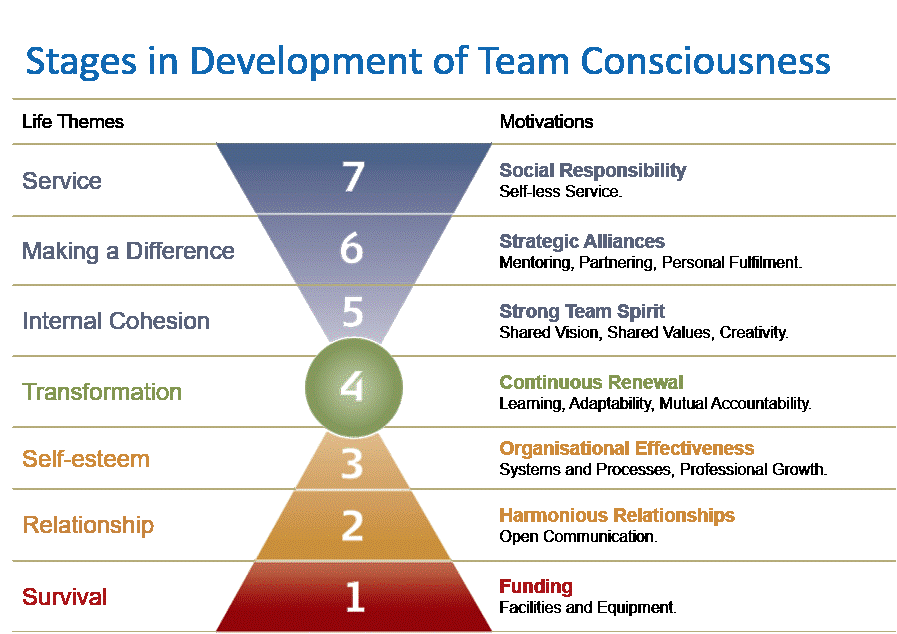
Surfacing the invisible to solve the visible
All these discussions allowed us to surface the invisible forces that were contributing to the original problem: the manager who it was felt was not communicating effectively. Without directly blaming or judging any one person, we were able to engage in dialogue and facilitate personal learning towards the desired culture. Subsequent leadership coaching supported the senior leaders to deepen their personal insights into how they were contributing to the current culture and how they could make changes to their own behaviour towards that desired culture.
During this process one of the key people in the business resigned. Change happens when we engage in dialogue and set a new level of expectations, but unfortunately for some this journey is uncomfortable and they make a personal choice to leave. In my experience, when that happens it is often the best outcome for both the individual and the team.
The immediate changes that resulted from our work with this group (over a three-month period) included:
- regular team meetings were established in which people could all receive the same message
- the ISO accreditation process, which had been dependant on a key individual, was re-scoped into a team project, including participants who were front line employees
- front line employees were given new responsibilities as part of their development
- regular performance conversations were established.
Comments from some of the participants included:
‘I feel relieved that [the tensions] are out in the open and that we can now talk about the issues.’
‘I feel a closeness, a coming together, through talking and taking time with one another. It feels more like a team.’
‘I feel happy that we are getting somewhere and that it feels like a good direction.’
Culture transformation is a dynamic journey. The commitment by the leader in this case to invest in this work was a powerful step towards improving the workplace culture, as was working towards a values-based organisation. A values-based organisation builds trust, while values-based decision making is the best approach to navigating complexity and dealing with uncertainty. It makes us focus on our human needs.
Do you understand the invisible factors that driving performance, engagement and wellbeing in your team or organisation?
For more information on our culture and values assessments, visit this page or contact us?


